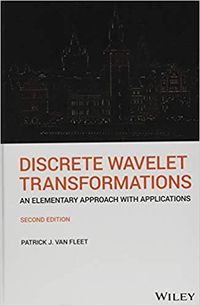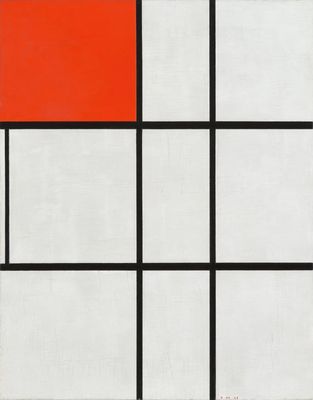CRN 16771
From Classes
(Difference between revisions)
HelmutKnaust (Talk | contribs) (→Open Problems) |
HelmutKnaust (Talk | contribs) (→Materials) |
||
| Line 82: | Line 82: | ||
| − | |||
| − | |||
| − | |||
| − | |||
| − | |||
| − | |||
| + | <!-- | ||
===Projects=== | ===Projects=== | ||
[http://helmut.knaust.info/class/202320_5311/Project04.nb Project 4], due April 11 | [http://helmut.knaust.info/class/202320_5311/Project03.nb Project 3], due March 9 | [http://helmut.knaust.info/class/202320_5311/Project02.nb Project 2], due February 16 | [http://helmut.knaust.info/class/202320_5311/Project01.nb Project 1], due February 2 | [http://helmut.knaust.info/class/202320_5311/Project04.nb Project 4], due April 11 | [http://helmut.knaust.info/class/202320_5311/Project03.nb Project 3], due March 9 | [http://helmut.knaust.info/class/202320_5311/Project02.nb Project 2], due February 16 | [http://helmut.knaust.info/class/202320_5311/Project01.nb Project 1], due February 2 | ||
| Line 103: | Line 98: | ||
*p.344: 8.28, 8.33ab, 8.35abc, 8.37c, 8.42, 8.46 | *p.344: 8.28, 8.33ab, 8.35abc, 8.37c, 8.42, 8.46 | ||
* Exercise 1, 2, 3, 4, 5, 6, 7 | * Exercise 1, 2, 3, 4, 5, 6, 7 | ||
| − | |||
*# Compute <math>\int_{-\pi}^\pi \cos(kt) \cos(nt)\, dt</math> for all values of k and n. | *# Compute <math>\int_{-\pi}^\pi \cos(kt) \cos(nt)\, dt</math> for all values of k and n. | ||
*# (a) Compute <math>\|\sin(kt)\|_2</math> for all k. (b) Can you find c such that <math>\|c\sin(kt)\|_2=1</math> for all k? | *# (a) Compute <math>\|\sin(kt)\|_2</math> for all k. (b) Can you find c such that <math>\|c\sin(kt)\|_2=1</math> for all k? | ||
Revision as of 15:26, 28 September 2023
Syllabus
- Topic. Math 5311/6311 Applied Mathematics: Discrete Wavelets and Image Processing.
- Time and Place. TR 17:00-18:20,
LART 209HUDS 300. The class will meet in person but may have to move online if dictated by circumstances.
- Instructor. Helmut Knaust, Bell Hall 219, hknaust@utep.edu, (915) 747-7002.
- Office Hours. TR 13:30-15:00, or after class.
- Textbook. Patrick Van Fleet. Discrete Wavelet Transformations: An Elementary Approach with Applications, 2nd edition, Wiley-Interscience.
- Prerequisites. The course has a very applied flavor. Knowledge of fundamental Calculus is required; some familiarity with matrices may be helpful. You will use Mathematica extensively, but prior knowledge is not expected. On the other hand, this is an advanced mathematics course, so you should have some mathematical maturity.
- Course Objectives. We will study a recent topic in mathematics (discrete wavelets), and how it is applied to the practical problem of image processing and compression. While some of the underlying ideas go back to Joseph Fourier (1768-1830) and Alfred Haar (1885-1933), most of the material you will see is not older than 40 years. During the course you should expect (and I will expect) that you make considerable progress in the following areas:
- Develop an understanding of the theoretical underpinnings of wavelet transforms and their applications.
- Learn how to use a computer algebra system for mathematical investigations, as a computational and visualization aid, and for the implementation of mathematical algorithms.
- Get a flavor of the ideas and issues involved in applying mathematics to a relevant engineering problem.
- Be able to give and defend a mathematical presentation to a group of your peers.
- Class Participation and Homework. I will regularly assign homework. The homework will not be collected, but presented by student volunteers. Your homework grade will contribute 10% to your grade.
- Tests. Two exams will be given on the following dates: Tuesday, October 10, and Thursday, November 21. Each exam counts 20% of your grade.
- Projects. You will complete several individual programming projects. These projects will be graded and contribute a combined total of 20% to your grade.
- Final Project. Student pairs will prepare and present a comprehensive final project at the end of the semester. The final project will count 30% of your grade.
- Mathematica. You need to request a home license of Mathematica for your laptop/desktop computer at https://www.utep.edu/technologysupport/ServiceCatalog/SOFTWARE_PAGES/soft_mathematica.html. Follow the instructions under "Access/Download". When prompted select the option "Download" (not "Mathematica Online"). The program is available for Windows, Macs and Linux; its size is about 4GB. The Technology Support Center may have laptops and hotspots available for students to borrow for the whole semester. Follow the links on https://www.utep.edu/technologysupport/TSCenter/tsc_eqcheckout.html.
- Mathematica Tutorials. A 15-minute introductory video is at https://www.wolfram.com/wolfram-u/catalog/gen005/ A not so short introduction to Mathematica is the book An Elementary Introduction to the Wolfram Language, by Stephen Wolfram, available online at https://www.wolfram.com/language/elementary-introduction/.
- Time Requirement. I expect that you spend an absolute minimum of nine hours a week reading the textbook, preparing for the next class, reviewing your class notes, and completing homework and project assignments. Not surprisingly, it has been my experience that there is a strong correlation between class grade and study time.
- Drop Policy. The class schedule lists Friday, November 3, as the last day to drop with an automatic "W". After the deadline, I may only be able to drop you from the course with a grade of "F".
- Academic Integrity. All students must abide by UTEP's academic integrity policies. For detailed information visit the Office of Student Conduct and Conflict Resolution (OSCCR) website. Academic Integrity is a commitment to fundamental values. From these values flow principles of behavior that enable academic communities to translate ideals into action.” Specifically, these values are defined as follows:
- Honesty: advances the quest for truth and knowledge by requiring intellectual and personal honesty in learning, teaching, research, and service.
- Trust: fosters a climate of mutual trust, encourages the free exchange of ideas, and enables all to reach their highest potential.
- Fairness: establishes clear standards, practices, and procedures and expects fairness in the interaction of students, faculty, and administrators.
- Respect: recognizes the participatory nature of the learning process and honors and respects a wide range of opinions and ideas.
- Responsibility: upholds personal responsibility and depends upon action in the face of wrongdoing.
- Military Service. If you are a military student with the potential of being called to military service and/or training during the course of the semester, you are encouraged to contact the instructor as soon as possible.
- Counseling Center. You are encouraged to go to Counseling and Psychological Services (202 Union West) for personal assistance as you work through personal concerns. Confidential counseling services are offered in English or in Spanish.
- Disabilities. If you have a disability and need special accommodation, please contact the Center for Accommodations and Support Services (CASS). The Center aspires to provide students accommodations and support services to help them pursue their academic, graduation, and career goals. Phone 747-948. E-mail: cass@utep.edu.
Mathematica Notebooks
Projects
Project 2, due October 3 | Project 1, due September 19
Open Problems
- Ex. 1 (a) Compute \(\|\cos(kt)\|_2\) for all k. (b) Can you find c such that \(\|c\cos(kt)\|_2=1\) for all k?
- p.120: 3.36,3.48ac
- p.106: 3.26ab
- p.88: 3.9bc
- p.38: 2.33b
- p.21: 2.3ab, 2.12
Homework Assignments
- Ex. 1 (a) Compute \(\|\cos(kt)\|_2\) for all k. (b) Can you find c such that \(\|c\cos(kt)\|_2=1\) for all k?
- p.120: 3.36,3.37,3.48ac
- p.113: 3.28, 3.29, 3.32ab, 3.33
- p.106: 3.26ab
- p.88: 3.4abc, 3.7, 3.8, 3.9abc
- p.38: 2.23, 2.30, 2.33
- p.21: 2.3ab, 2.7, 2.10ab, 2.12, 2.13
Reading
5.1, 8.3, 2.4, 8.2, 8.1, 3.4, 3.3, 3.2, 3.1, 2.2, 2.1
Materials
Trig Identities | A Method for the Construction of Minimum-Redundancy Codes. Proceedings of the I.R.E., September 1952, pp. 1098–1101. | Towards Shannon's Entropy Theorem | Photo set | How to display matrices the "right" way | Course Overview
Jackson Pollock. One: Number 31 (1950)
Piet Mondrian. Composition B (No.II) with Red (1935)


